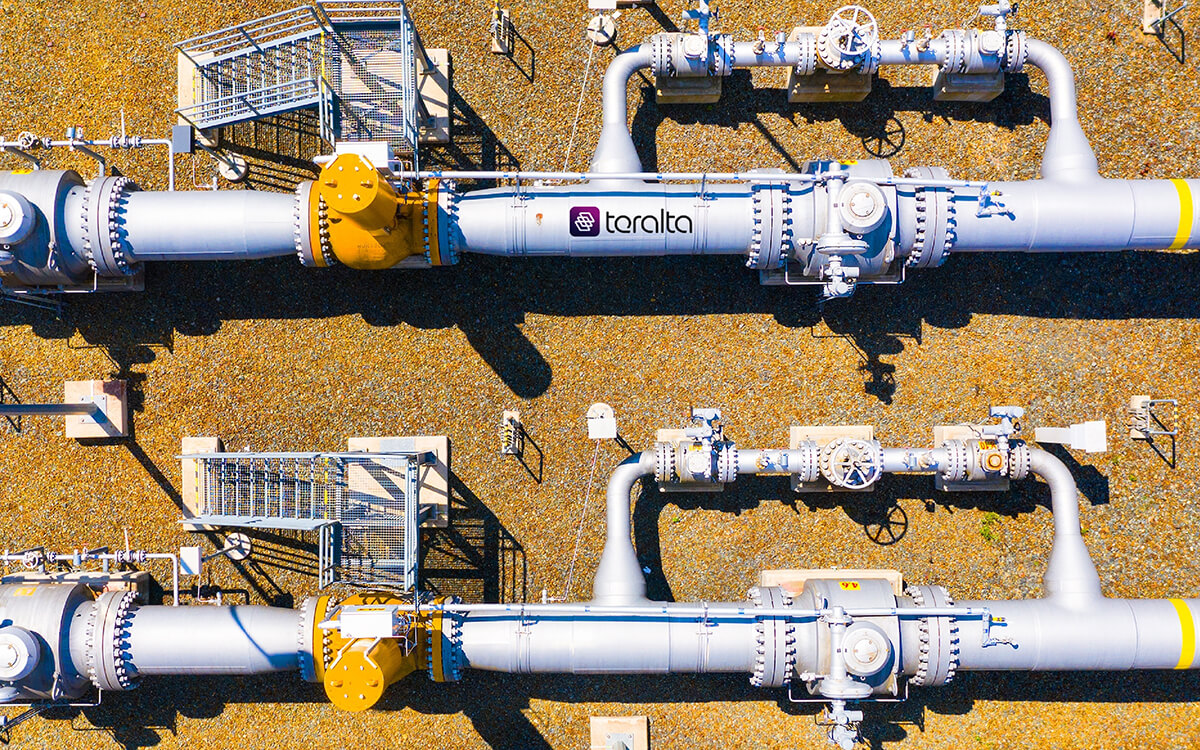Build Your Own Energy Supply with Hydrogen-Fired Infrastructure
A reliable source of energy is never guaranteed. Today, we see more significant and sustained blackouts—in fact, five of the top ten blackouts of all time have occurred in the past five years.
Along with an unreliable energy supply, some hydrogen projects—especially stranded hydrogen—must deliver energy to the project site, which is often remote and has limited or no access to an established grid.
To overcome these challenges, some companies are looking to establish their own “behind the fence” grid, powered by hydrogen produced onsite and readily available. This simple solution delivers some incredible benefits for the business:
- Independence from the public grid (consistent supply and cost control)
- An abundant source of clean, green energy (very low carbon footprint)
- No need to transport energy to the site (expensive and time-consuming)
As VP of Product at Teralta, I spend a lot of time designing, engineering, and manufacturing infrastructure to support our clean hydrogen and e-NG projects. Recently, I’ve been exploring hydrogen-fired equipment for use within an independent energy model.
Hydrogen-fired equipment
The infrastructure to support a hydrogen-powered energy model is surprisingly simple and straightforward. In fact, it’s the same model we’ve been using for natural gas, with some minor modifications to address leaks and safety considerations specific to hydrogen. For example, inlet piping to burners must be purpose-built to support capacity, threaded fixtures will not work, and other variations.
As a leader in the hydrogen market, the Teralta team brings a lot to the table, with plenty of experience under our belts, including gas compression projects for hydrogen, biogas, and natural gas, as well as direct-fired hydrogen compressors, PSA or membrane purification systems, tube trailer manufacturing, and virtual pipelines.
It doesn’t hurt that this is intriguing work where we design and build edge systems that are new to the market, an effective way to engage some of the best brains in hydrogen.
In-house design and manufacturing
As an engineer fascinated by hydrogen, I believe Teralta’s end-to-end business model is unique in the industry. While there are plenty of companies in our space, none can engineer, procure, manufacture, and machine the infrastructure in-house.
For the Teralta team, this means we’re involved with every project at the earliest possible stage, often before negotiations with partners are complete. This is extremely helpful for the work we do.
For our customers, this means optimal control of project budgets and timelines.
Additional use cases for hydrogen-fired equipment
Next steps
If your business is exploring hydrogen as a low-carbon alternative to natural gas, a hydrogen-powered system is an excellent option.
Teralta works with different industries to deliver the strategy, technology, infrastructure—and experience—to ensure hydrogen projects are safe, successful, and profitable. If you have a project you’d like to discuss, please reach out to me via LinkedIn. For more information, visit our website or contact us.
